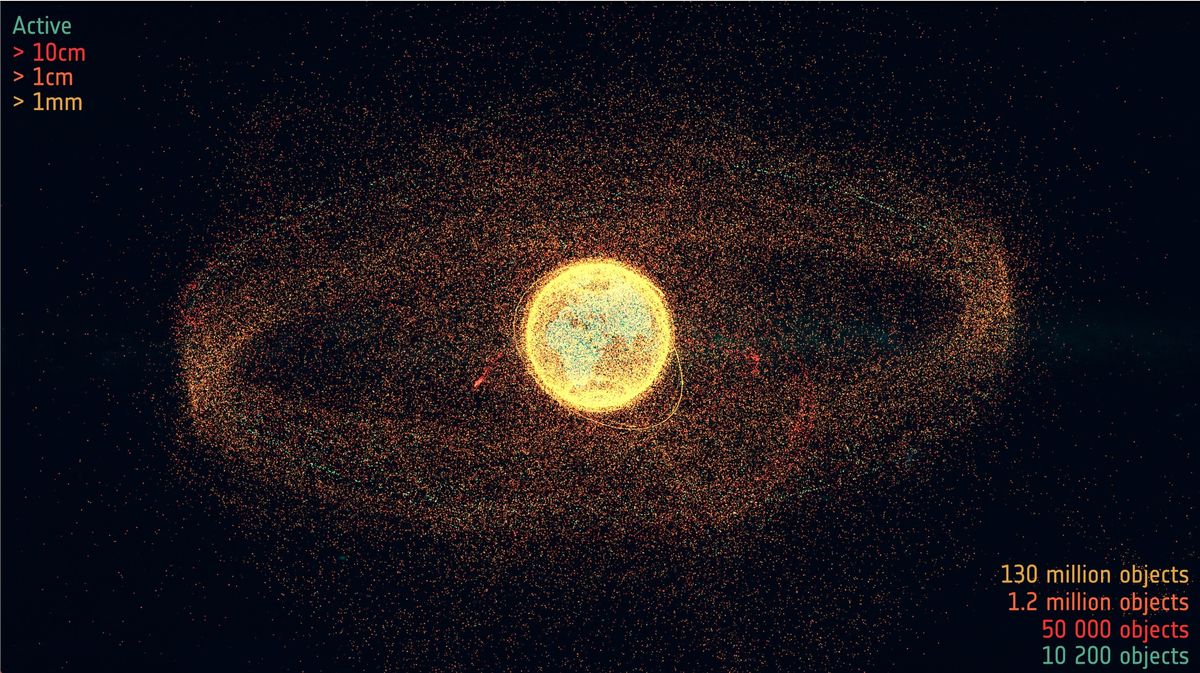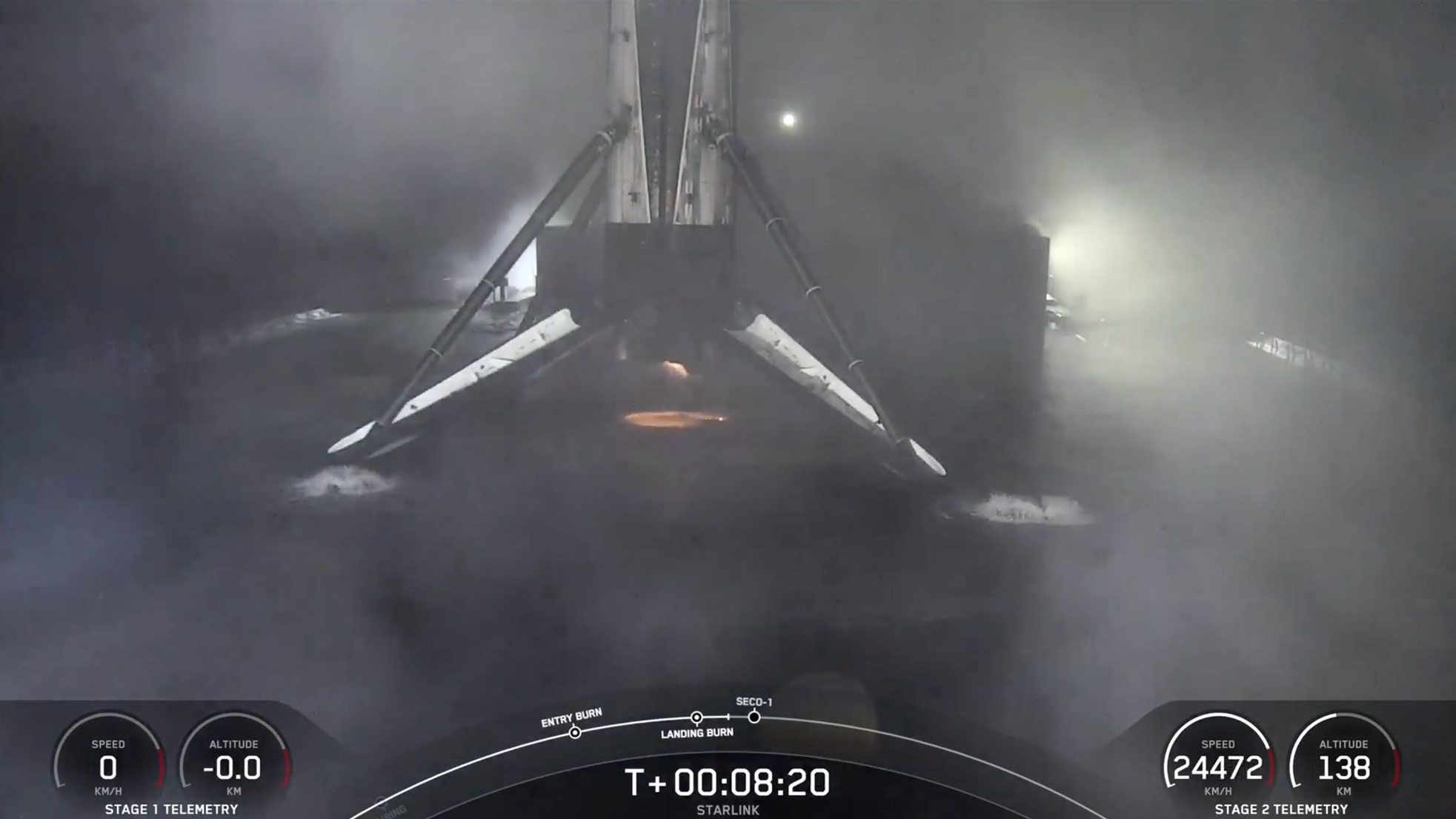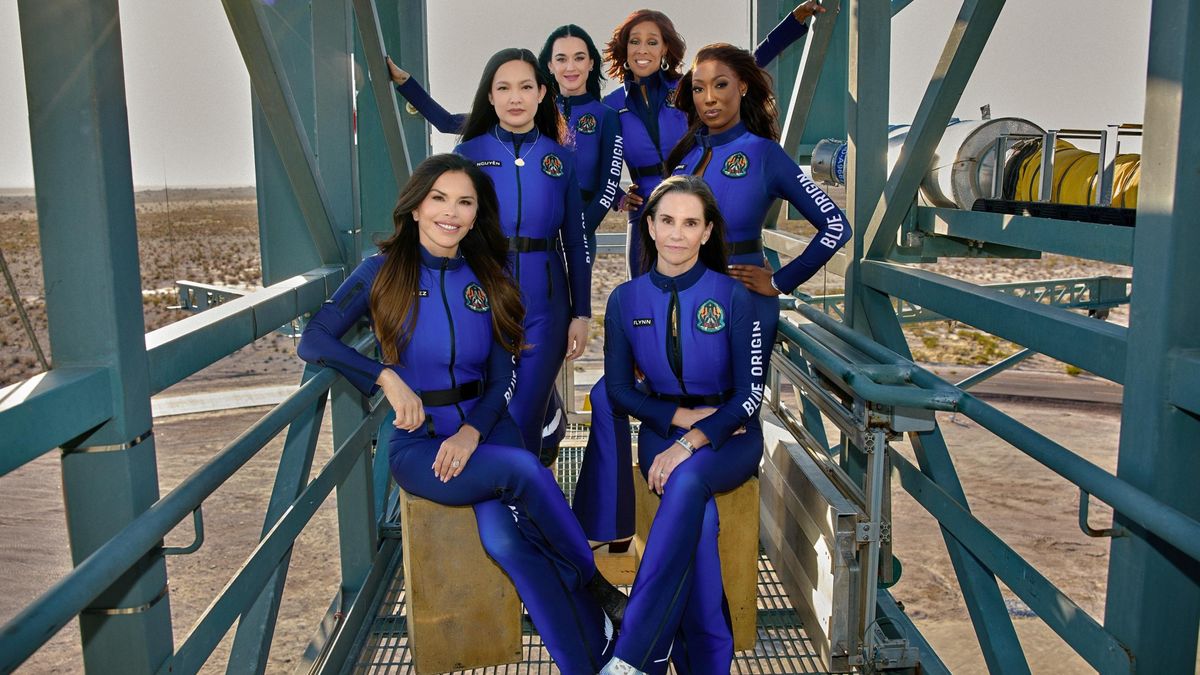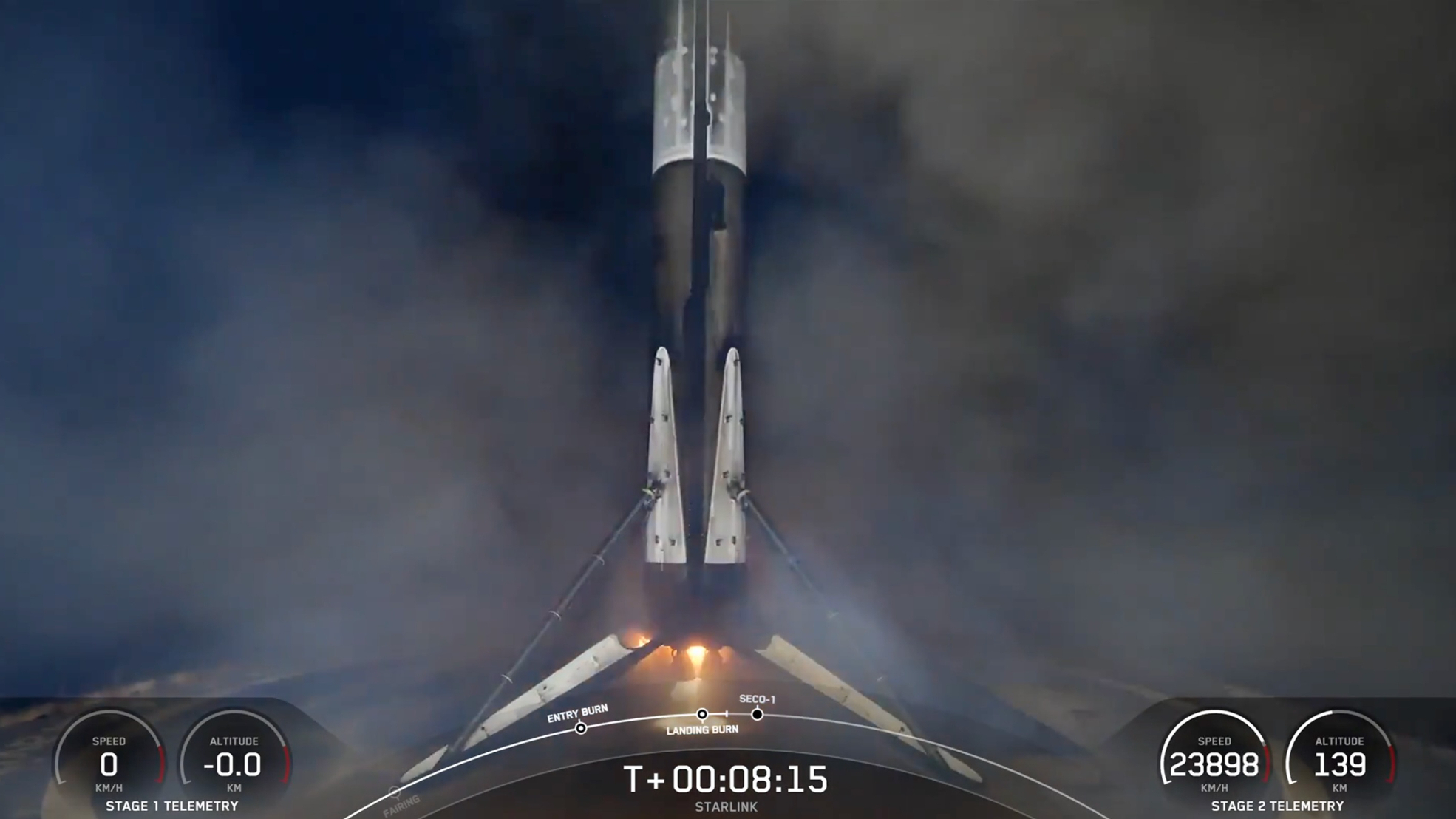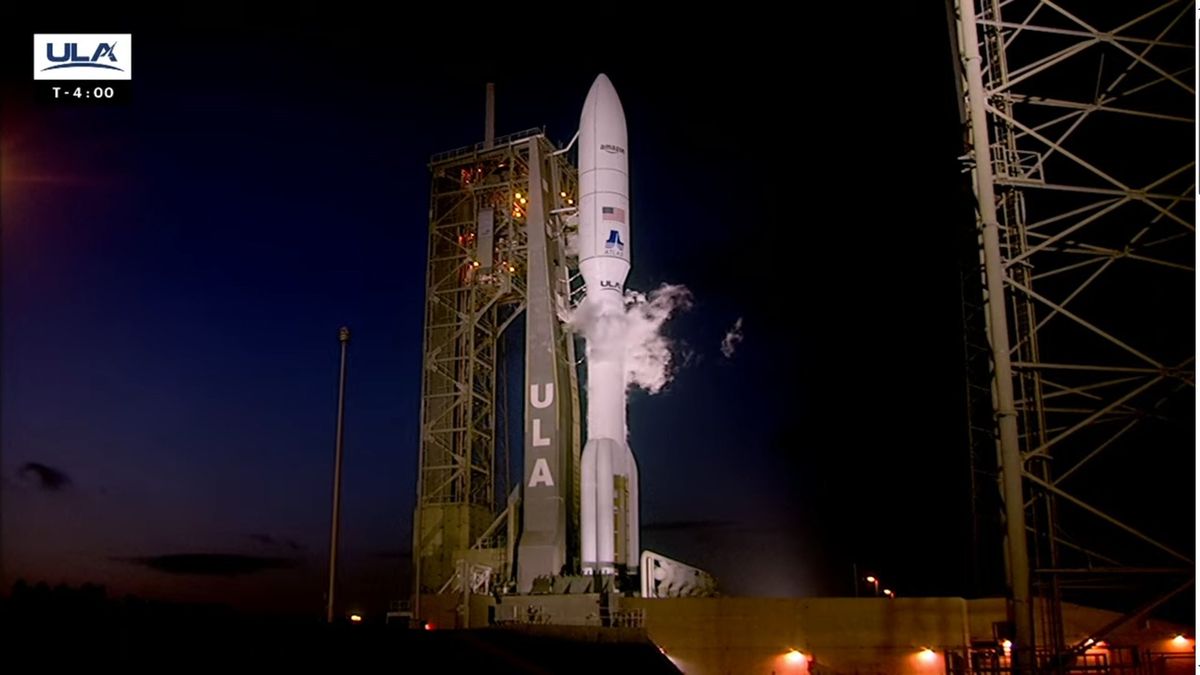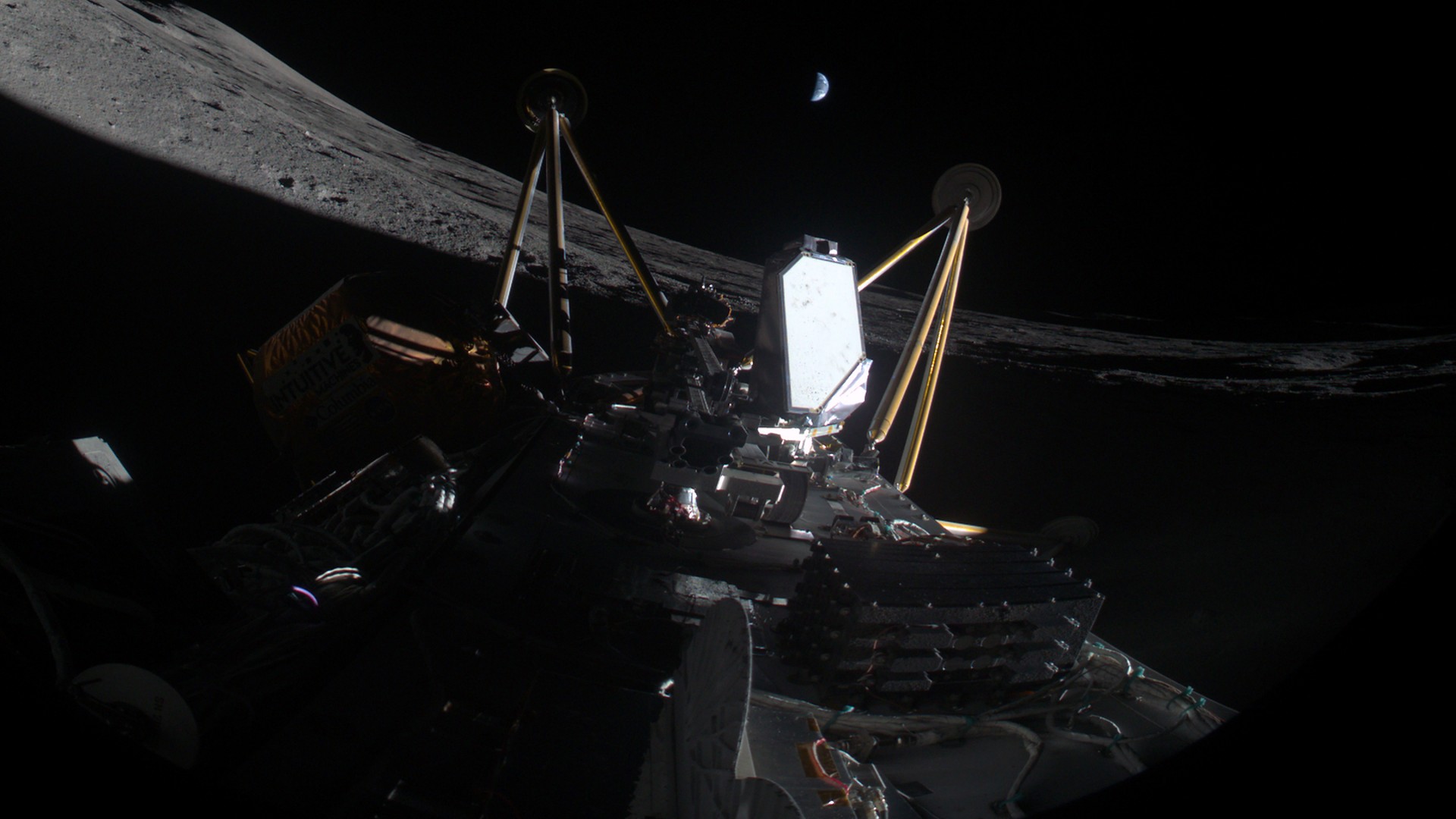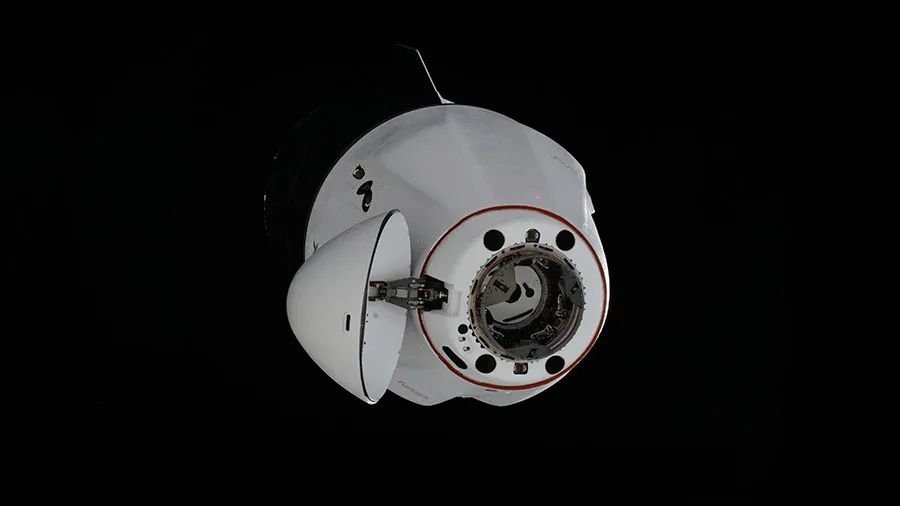At least three old satellites or rocket bodies fall back to Earth every day, a new report reveals. And experts warn that the number of objects returning from space is set to increase, a possible concern for the health of Earth’s atmosphere and for the safety of humans on the ground. The Space Environment Report, released by the European Space Agency (ESA) on April 1, found that some 1,200 “intact objects” reentered the atmosphere in 2024, in addition to countless space debris fragments. Despite this incessant rain of junk battering…
Read MoreTag: Space Exploration
SpaceX Falcon 9 rocket launches 27 Starlink satellites to orbit on record-breaking 27th flight (photos)
SpaceX continues to push the boundaries of rocket reuse. A Falcon 9 rocket topped with 27 of the company’s Starlink internet satellites lifted off at midnight (0400 GMT) on Monday (April 14) from Florida’s Cape Canaveral Space Force Station. It was the 27th launch for the rocket’s first stage, breaking a reflight record that this same booster set two months ago. Sixteen of its liftoffs have been Starlink flights, SpaceX wrote in a mission description. You may like Booster 1067 missions The booster came back to Earth safely for the…
Read MoreKaty Perry and Blue Origin’s all-female rocket crew get Monse designer flight suits
When Katy Perry and the all-woman crew of Blue Origin’s next astronaut launch lift off on Monday, they’ll launch in style. Literally. Lauren Sánchez, the journalist and author who organized the flight (she’s also fiancee of Blue Origin founder Jeff Bezos), recruited designer Monse to reimagine Blue Origin’s flight suits. “I think the suits are elegant, but they also bring a little spice to space,” Sánchez told the New York Times. Perry and Sanchez will launch on Blue Origin’s New Shepard suborbital rocket on Monday (April 14) along with “CBS…
Read MoreSpaceX launches 21 Starlink satellites on Falcon 9 rocket, lands booster on ship at sea
Another batch of Starlink wireless internet satellites is in orbit after a full moon-lit SpaceX launch from Florida. A SpaceX Falcon 9 rocket launched the Starlink 12-17 mission Saturday night (April 12) from NASA’s Kennedy Space Center (KSC). The Falcon 9 lifted off from KSC’s historic Launch Complex-39A at 8:53 p.m. EDT (0053 on April 13 GMT), carrying a stack of 21 Starlink satellites toward low Earth orbit (LEO). The Falcon 9 rests on the deck of a drone ship at sea shortly after its touchdown on April 12, 2025.…
Read More‘I’m really excited about the engineering of it all.’ Katy Perry is psyched for her Blue Origin launch on April 14
Katy Perry is about to blast off like a firework on her Blue Origin rocket launch this Monday. Blue Origin will launch its eleventh crewed flight on April 14, with pop star Katy Perry strapping into the New Shepard space capsule alongside five other passengers, all of them women. The mission, NS-31, will be the first all-female crew since the Soviet Union’s Valentina Tereshkova became the first woman in space during a solo flight in 1963. “Im really excited about the engineering of it all,” Perry told the Associated Press,…
Read MoreBlue Origin’s all-female spaceflight urges women to shoot for the stars — but astronaut memoirs reveal the cost of being exceptional
This article was originally published at The Conversation. The publication contributed the article to Space.com’s Expert Voices: Op-Ed & Insights. Jasleen Chana is a PhD candidate at UCL in the department of Science and Technology Studies. For the first time since Russian cosmonaut Valentina Tereshkova’s solo flight in 1963, a spacecraft will fly with only women aboard. Blue Origin’s all-female spaceflight crew, which includes pop star Katy Perry, is set to take off this spring. You may like Jeff Bezos’ crew is assembled from successful and well-known women, also including…
Read MoreLaunch of Amazon’s 1st Kuiper internet satellites delayed by bad weather
Amazon may be a whiz at fast online deliveries, but the massive company will have to wait to launch the first satellites of its new space internet constellation after bad weather thwarted a liftoff on Wednesday night. A United Launch Alliance Atlas V rocket attempted to launch 27 of Amazon’s first Project Kuiper internet satellites to orbit from Florida’s Cape Canaveral Space Force Station on April 9, but persistent clouds near the pad violated launch rules, ULA officials said. “It is confirmed that we will not continue with the Amazon…
Read MoreSpaceX to launch new Intuitive Machines moon lander, lunar satellites in 2027
Intuitive Machines may have crashed its latest moon lander on the lunar surface, but that’s not keeping the company down for long. The Houston-based company has picked SpaceX to launch IM-4, its fourth moon lander, on a Falcon 9 rocket in 2027 alongside two relay satellites for a NASA lunar communications network. The news comes just weeks after the company’s IM-2 moon lander crashed near the moon’s south pole, and as the firm continues work on its third moon lander (yes, it’s called IM-3), which is expected to launch in…
Read MoreSpaceX’s next Dragon cargo ship launch for NASA will lift off on April 21
NASA’s next special delivery to the International Space Station has a launch date, but it’s going to be one for early-birds. A SpaceX Falcon 9 rocket will launch an uncrewed Dragon cargo ship packed with tons of supplies on Monday, April 21, from the historic Pad 39A of NASA’s Kennedy Space Center in Cape Canaveral, Florida. Liftoff is set for 4:15 a.m. EDT (0815 GMT), making it a predawn launch. “Along with food and essential equipment for the crew, Dragon is delivering a variety of experiments, including a demonstration of…
Read MoreHow to watch Jared Isaacman’s NASA chief confirmation hearing in the Senate on April 9
American billionaire Jared Isaacman heads to Capitol Hill this week for a Senate confirmation hearing on whether he’ll take NASA’s top job, and you can watch it live online. Jared Isaacman, President Donald Trump’s nominee to serve as the next NASA Administrator, will appear before the Senate on Wednesday (April 9) during a hearing with the Committee on Commerce, Science, and Transportation. The hearing will begin at 10 a.m. EDT (1400 GMT) and you’ll be able to watch it live directly from a Senate webcast or on the NASA+ streaming…
Read More